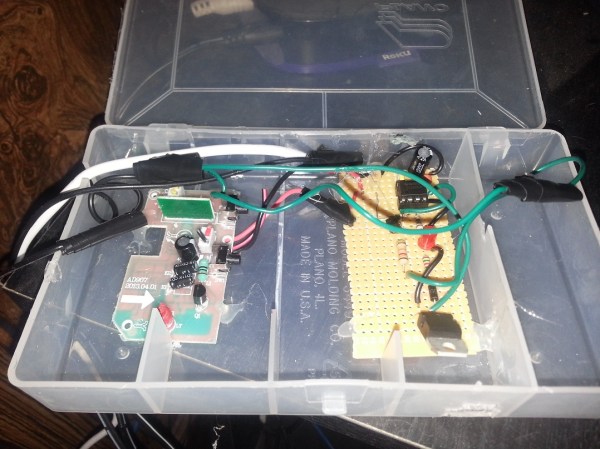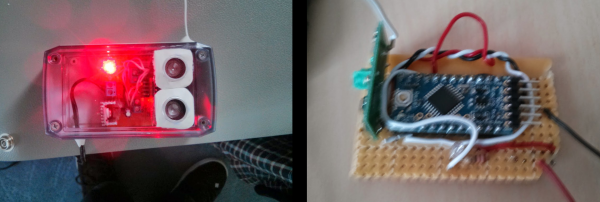Look at any list of things to do to make your house less attractive to the criminal element and you’ll likely find “add motion sensing lights” among the pro tips. But what if you don’t want to light up the night? What if you want to use a motion sensor to provide a little light for navigating inside a dark garage? And what if the fixture you’ve chosen is a solar fixture that won’t quite cooperate? If you’re like [r1ckatkinson], you do a teardown and hack the fixture to do your bidding.
[r1ckatkinson]’s fixture was an inexpensive Maplin solar unit with PIR motion sensing, with the solar panel able to be mounted remotely. This was perfect for the application, since the panel could go outside to power the unit, with the lamp and PIR sensor inside. Unfortunately, the solar cell is also the photosensor that tells the unit not to turn on during the day. Armed with scratch pad and pencil, [r1ckatkinson] traced the circuit and located the offending part – a pull-down resistor. A simple resistor-ectomy later and he’s got a solar-powered light working just the way he likes it.
A simple hack, but effective. Seeing off-the-shelf gear modified is always a treat. Of course there’s something to be said for the more home-brew approach to security lighting, too.


















